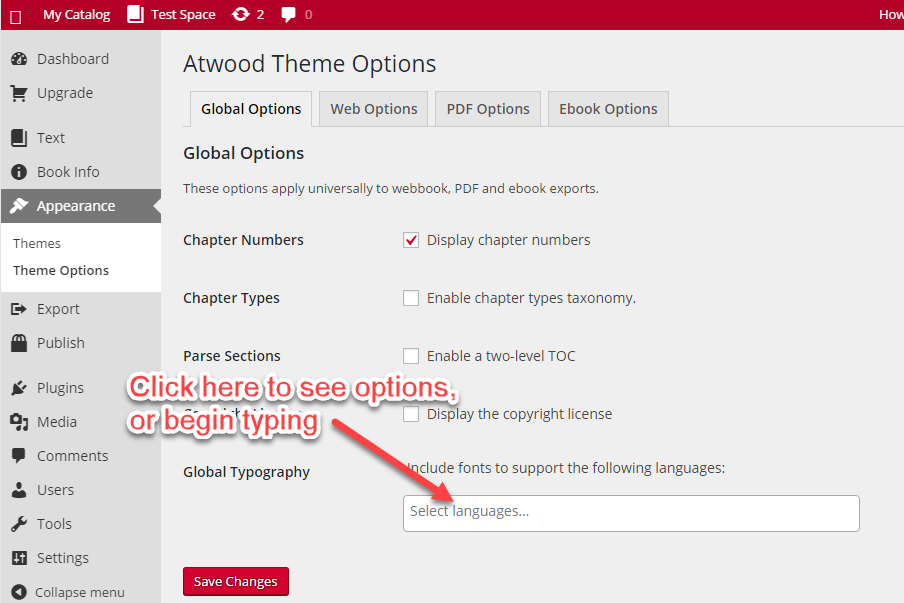Pressbooks handles languages in a few different ways. This chapter will cover:
- How to set your book’s language
- How to change the interface language
- How to add font support for non-Latin alphabets
Book Language
When you first create your book, you will be asked what language you would like it to be in. However, if you would like to change this, you can do so at any time in the first section of the “Book Info” page.

This setting controls some of the metadata in your book, which can be used for distribution, and also sets certain automatically generated elements in your text; specifically:
- Contents (for the Table of Contents page)
- Part (for any Part pages)
- Chapter (for chapter opening pages)
We are always looking to expand our language offerings, so if you see that the language you wish to use isn’t available, you can email us the translated versions of the three words listed above at support@pressbooks.com and we will add it to the list.
Interface Language
You might find it easier to work in the Pressbooks interface in a language other than the default, English. To change the interface language:
- Click on your name in the top right corner of your screen to open your user profile.
- Scroll to the bottom of the page
- Under “Extra Profile Information”, select your language
- Save your changes
NOTE: This setting is personal to you and won’t affect anyone else working on the same book as you. Every user can set their own language as best suits them.
Expanding Interface Language Options
Our goal is to offer the Pressbooks interface in as many languages as possible, and we use a crowd-sourced translation tool to expand our offerings. This service allows anyone to log in and translate as many or as few words as they want, to contribute to the completion of a language project, which then becomes an option for all Pressbooks users. If you think you can help, go to our Transifex page and see if your language needs work.
Global Typography Support
If your book requires a language that uses a non-Latin alphabet, Pressbooks allows you to embed a font in your outputs to ensure it displays correctly.
To do this, go to your “Theme Options” page and select one or more languages under the “Global Typography” option.

Currently, we offer support for the following languages:
- Ancient Greek
- Arabic
- Biblical Hebrew
- Chinese (Simplified)
- Chinese (Traditional)
- Coptic
- Gujarati
- Japanese
- Korean
- Syriac
- Tamil
- Tibetan
- Turkish
Many of these options have come in response to users’ specific needs, so if you would like to work in a language that isn’t currently supported, let us know and we will try our best to add it to the list. Email us at support@pressbooks.com.